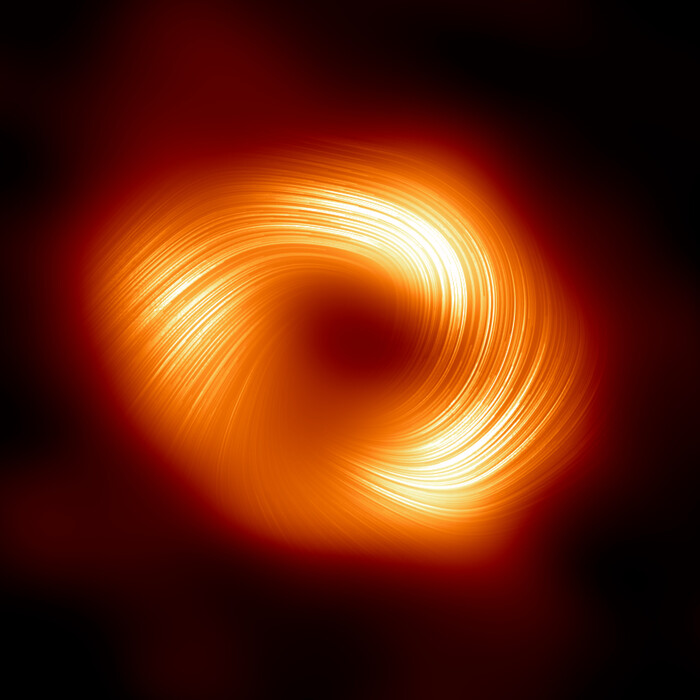Origami peeps in the dark
In the year since its launch, the James Webb Space Telescope has beamed images back to Earth that help crack the puzzle of the universe
The James Webb Space Telescope is, no matter how you spin it, the most sophisticated toy that humanity has created in an attempt to explore the secrets of the universe around us.
Webb, which this week marks exactly one year since its launch, is considered the hipster and updated "grandson" of the old Hubble Space Telescope (which has been active since 1990).
It is a technological marvel of creation, which managed to squeeze 18 polished mirrors and another cloak of sun visors into an origami-like structure the size of a bus, which was programmed to open independently - and it did the job without a single glitch.
No less than 10 billion dollars were invested in the development of this miracle.
Now, after acclimatizing to a convenient vantage point, 1.5 million kilometers from Earth, and after recovering from damage to one of the mirrors (a particle of space dust collided with it at tremendous speed), the telescope continues to stream photographs that have never been seen before, while using its ability to "see" infrared radiation - This is what the human eye is not designed to perceive.
Thus, for example, he revealed a new look to the planet Jupiter, brought photographs of surprising solar systems, and documented nebulae and remote "quasars".
But Webb's main strength is in collecting signals from the most distant galaxies, which so far have not been observed, which makes him a one-eyed detective peering into the earliest times of the universe.
The astrophysicists keep opening champagne at the sight of the evidence it brings to the processes that occurred not long after the big bang - which will, perhaps, make it easier in the future to answer the biggest riddle of all: how did we get here?
The historical photo of Sagittarius A, photo: AP
The donut hole
This year the researchers finally managed to get a picture of the huge black hole at the center of the Milky Way
In the center of our Milky Way, as in the core of any self-respecting galaxy, resides a terrifying black hole, of the type called supermassive.
In Latin he got a name suitable for a villain from superhero movies - Sagittarius A - but in Hebrew they made him a non-threatening nerd - "Arch A".
Be that as it may, this is not a small jlob, whose diameter is 24 million kilometers and whose mass is equal to 4.2 million masses of our sun.
It is 26 thousand light-years away from us, and since one light-year is equal to about 9.5 trillion kilometers, if we wanted to fly to it in the fastest spacecraft that humanity has to offer (half a million kilometers per hour on the clock) - we would reach it in a negligible time of 50 million years. Yes , fifty million.
The problem was that so far no one had been able to bring direct documentation of the bastard bone.
The researchers did photograph the indirect effect it produces on the orbits of stars that are close to it, but there was no smoking gun image, and the fact that a huge cloud of dust obscures the view of it from Earth did not help either.
All this until May this year.
After in 2019 the astrophysicists brought the first record of a black hole of some kind (at the center of a galaxy called M87), the historic photo-murder photo of our neighborhood hole arrived, which was composed by a mind craft of countless data collected by a telescope that "sees" in radio waves.
So what is captured in the picture?
As we learned in school, you cannot see a black hole directly, because light cannot escape its gravity.
That is why the researchers recorded what is happening in the immediate ring around it, which is called in professional language "Event Horizon".
This is a particularly crazy and violent area, where space materials fall into the hole at enormous speed, and become heated.
The tremendous heat radiation is, in part, what was immortalized in the exciting donut photo.
The Artemis mission spacecraft on the launch pad, November 2022, photo: AFP
A new step for humanity
After a 50-year hiatus, NASA this year led an experimental program to land a man on the lunar soil.
50 years is a long time to miss, and after the last manned spacecraft to be launched to the moon was Apollo 17, in 1972, the US space agency, NASA, felt the urge to put a man back on Earth's faithful friend.
After all, America is great again, and budgets have been raised, among other things, from private sources, and it's also time to think about the days when the moon will serve as a central station, not to mention a thriving colony, for future journeys in the depths of space.
So after a glorious history that included Neil Armstrong's great step for humanity (Apollo 11), and dramatic moments of Hollywood-level anxiety (Apollo 13), it was only natural that the new plan to conquer the moon would not embarrass the firm (and we will not enter here again into the conspiracy theories surrounding "there was a landing on the moon, or it was a fake of a famous Hollywood director in the studio").
The new international program, launched in 2017 under the leadership of NASA, was named "Artemis", and it is intended to land a person on white soil as early as 2025. Meanwhile, as a small step, the Artemis 1 spacecraft was launched in November 2022, as part of an initial test of a delivery system A new version of a crew cabin for orbit around the moon (without a physical landing) - for the time when flesh-and-blood astronauts will sit in it. The experts have put sensor-rich mannequins in the cabin, just like before the launch of a new car.
The Artemis mission has so far been crowned with success, and the system has returned to Earth and landed in the Pacific Ocean.
Now the next stages of the experiment are being prepared, for the moment when humans will again jump on the moon.
Then it will be possible to call Tom Hanks, find out if he is available for the film.
Imaging of the DART probe on its way to a dimorphous asteroid, photo: EPA
Armageddon, the reality version
Even without the help of Hollywood, humanity proved this year for the first time that it can divert an asteroid from its orbit
Although NASA experts have reassured us that in the next few hundred years, as far as we know, no asteroid of a world-destroying size is expected to hit the Earth, as happened to the dinosaurs. But if there is one thing we learned from Bruce Willis, Yerom India, it is that we should prepare and arm ourselves in advance if we want to prevent space rocks Enormous and unrestrained to race on a direct collision course with us.
So while there are less bombastic ways to prevent Armageddon - for example, launching a spacecraft that will fly next to the asteroid and slowly deflect it from its path using its natural gravity, but hey, even NASA likes Hollywood fireworks as much as anyone else. And so, as part of a program that received The astrophysicists gave the cool name DART (an acronym for Double Asteroid Redirection Test) to two asteroids that floated peacefully around each other, 11 million kilometers away from us, without threatening anyone, and launched a probe at the smaller one (with a diameter of 160 meters) to crash into it.
The reason for the cosmic discourtesy was simple: to test under real conditions, and not just in a blockbuster scenario, the degree of deviation that would occur in the trajectory of an asteroid following the intended impact on it.
Along the way, the researchers also wanted to examine the debris paths that such an initiated collision would create, because we don't want to dissuade an asteroid from plotting the destruction of the Earth - and then be forced to deal with all its fragments flying freely to that Earth itself.
The probe, which was launched in November 2021, crashed into the poor asteroid, named Dimorphos, three months ago, at a tremendous speed of 23,000 km/h. Astronomy experts believed that the impact of the crash on Dimorphos' orbit would be relatively negligible, but surprisingly, it turned out that the actual change was greater than they thought. first.
The researchers immediately let out a sigh of relief: for the first time humanity has proven that when it aims to survive, no malicious body in the cosmos should mess with us.
Yes, even if it's an innocent space rock that didn't mean to hit a fly.
were we wrong
We will fix it!
If you found an error in the article, we would appreciate it if you shared it with us


/cloudfront-eu-central-1.images.arcpublishing.com/prisa/DGKSYYSAUBHLZJJTPYM7TMTCWM.jpg)




